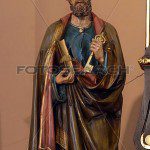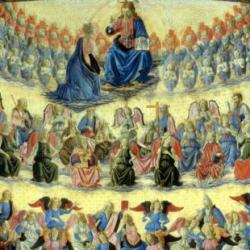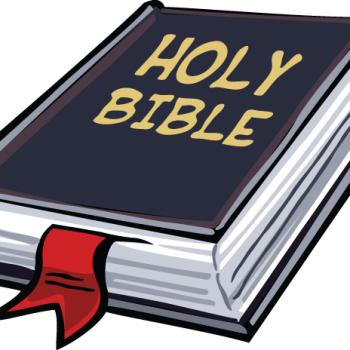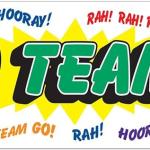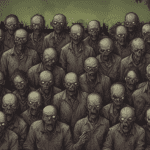How should we sit in church? I think we should sit in a circle or at least a half circle as in an amphitheatre. Instead, we sit in rows, all looking toward a raised pulpit that is perhaps elevated on a stage. That’s because our traditional church service is performance-oriented. Encircled meetings are more socially-oriented.
Philadelphia, Pennsylvania, is called “the city of brotherly love.” That’s because the Greek word phileo means “love,” and adelphos means “brother.” In 1965, six of us professional golfers on the PGA Tour, who were Christians, met in this city of brotherly love to start what we soon called “the PGA Tour Bible Study.” We decided certain things about our small group that became a tradition for many years. We would meet weekly, on either Tuesday night or Wednesday night before the tournament started on Thursday. We would make it an open meeting that anyone on the Tour could attend, regardless of religious affiliation or if they had none. We would not draft a creed. Rather, we would make the Bible our creed. We would open and close our meetings with prayer. We would have a time we called “fellowship,” when anyone could freely share something. Also, someone would give a teaching, preferably from the Bible. And we would always meet in a circle.
Why meet in a circle? We thought it was more conducive to fellowship. The book of Acts says when the first Jewish Christians (really Nazarenes) gathered together, they “devoted themselves to the apostles’ teaching and fellowship, to the breaking of bread [communion service] and prayers” (Acts 2.42). Notice the word “fellowship.” It should be an integral part of every church service, not just when you walk out of church and have conversation with friends. Nowadays, and for a long time, it ain’t like it used to be.
Fortune magazine (March 15, 2017, p. 32) says meeting in a circle is more conducive to learning. In an article entitled “Join a Learning Circle,” it states, “Most of us absorb far more when seated in a circle of peers who are studying the same thing than from the rows of a traditional classroom or while poring over an online course on our laptops. Instead of going it alone, make this the year you try a self-directed learning group.”
Yes, I know many people object to circle meetings by saying it won’t work with large churches, etc. What about that big church in heaven?
 When angels gather together in heaven to worship God, they meet in a circle. John, the author of the book of Revelation, relates an experience he had that apparently was a vision in which he was a participant. He says, “I was in the spirit, and there in heaven stood a throne, with one [God] seated on the throne!… Around the throne are twenty-four thrones, and seated on the thrones are twenty-four elders,… Around the throne, and on each side of the throne, are four living creatures, full of eyes in front and behind” (Rev. 4.2, 4, 6 NRSV and throughout).
When angels gather together in heaven to worship God, they meet in a circle. John, the author of the book of Revelation, relates an experience he had that apparently was a vision in which he was a participant. He says, “I was in the spirit, and there in heaven stood a throne, with one [God] seated on the throne!… Around the throne are twenty-four thrones, and seated on the thrones are twenty-four elders,… Around the throne, and on each side of the throne, are four living creatures, full of eyes in front and behind” (Rev. 4.2, 4, 6 NRSV and throughout).
These twenty-four elders must be special angels. They cannot be human beings, as some Bible teachers have thought, because these twenty-four elders and four living creatures later sing to Jesus about his people, saying, “you have made them to be a kingdom and priests serving our God, and they will reign on earth” (Rev 5.10).
This encircled arrangement seems to be the same in a similar scene depicted in the book of Daniel in the Old Testament. The author says, “As I watched, thrones were set in place, and an Ancient One [God] took his throne…. A thousand thousands served him, and ten thousand times ten thousand stood attending him. The court sat in judgment and the books were opened” (Daniel 7.9-10). These “thrones” seem to be those of the twenty-four elders in Revelation, as New Testament scholar Richard Bauckham claims. This scenario is clearly a court scene in heaven.
Returning to the above-mentioned scene in the book of Revelation, John next relates, “I saw in the right hand of the one seated on the throne a scroll written on the inside and on the back, sealed with seven seals; and I saw a mighty angel proclaiming with a loud voice, ‘Who is worthy to open the scroll and break its seals?’ And no one in heaven or on earth or under the earth was able to open the scroll or to look into it. And I began to weep bitterly because no one was found worthy to open the scroll or to look into it. Then one of the elders said to me, ‘Do not weep. See, the Lion of the tribe of Judah, the Root of David, has conquered, so that he can open the scroll and its seven seals.’ Then I saw … a Lamb standing as if it had been slaughtered,… He went and took the scroll from the right hand of the one who was seated on the throne” (Rev 5.1-7).
This Lion of the tribe of Judah, this Lamb who had been slaughtered, is Jesus. And notice why he was the only one in heaven or earth who was qualified to take the scroll–it was because he “conquered,” which he could only do as a man.
We soon read next, “Then I looked, and I heard the voice of many angels surrounding the throne and the living creatures and the elders; they numbered myriads of myriads and thousands of thousands, singing with full voice, ‘Worthy is the Lamb that was slaughtered to receive power and wealth and wisdom and might and honor and glory and blessing!'” (Rev 5.11-12). Notice that these many angels surround the throne.
Jesus then consecutively opened seven seals on the scroll (Rev 6; 8.1). Apparently, the scroll had writing on it which forecast what would then happen when each seal was opened. As Jesus opened the first six seals, John saw what happened. Then we read about God protecting 144,000 Jews (Rev 7.1-8). After that John saw “a great multitude” that cried out about “salvation … And all the angels stood around the throne and around the elders and the four living creatures, and they fell on their faces before the throne and worshipped God” (vv. 9-11).
In conclusion, I’m for doing on earth like they do in heaven–meeting in a circle.


